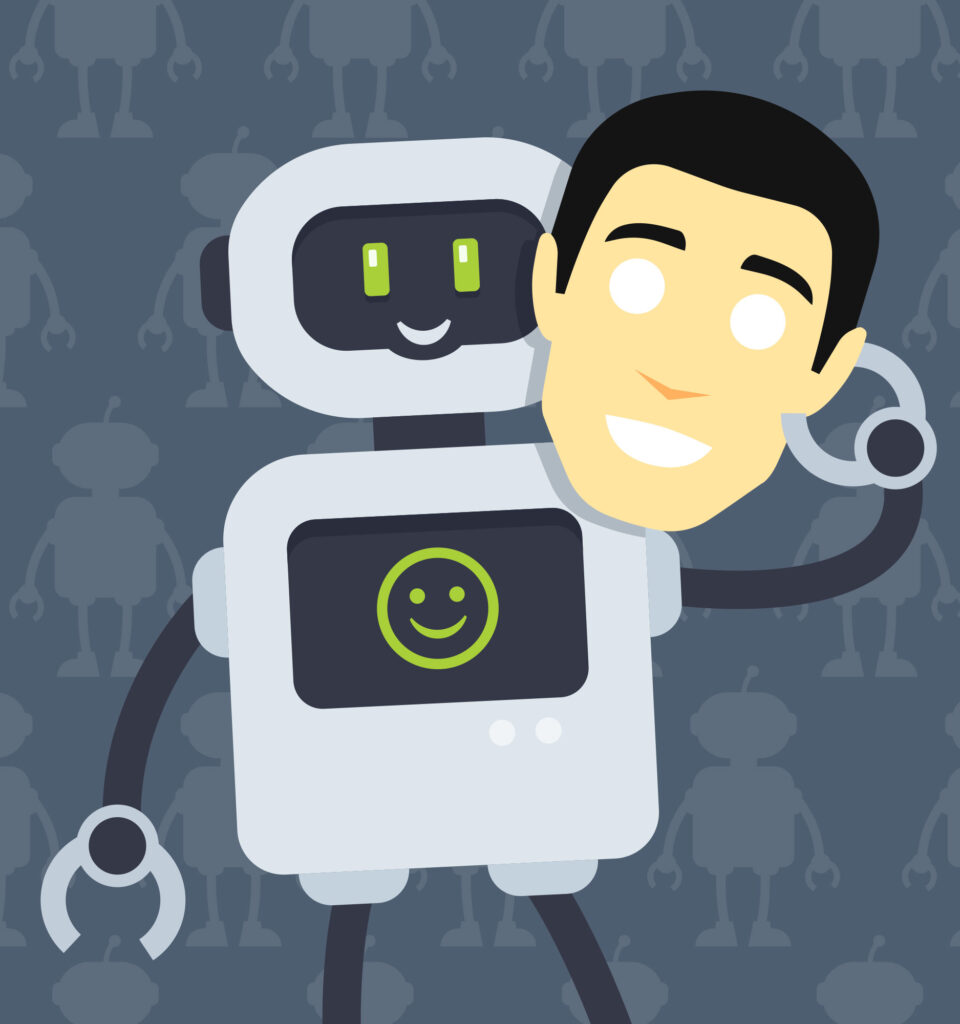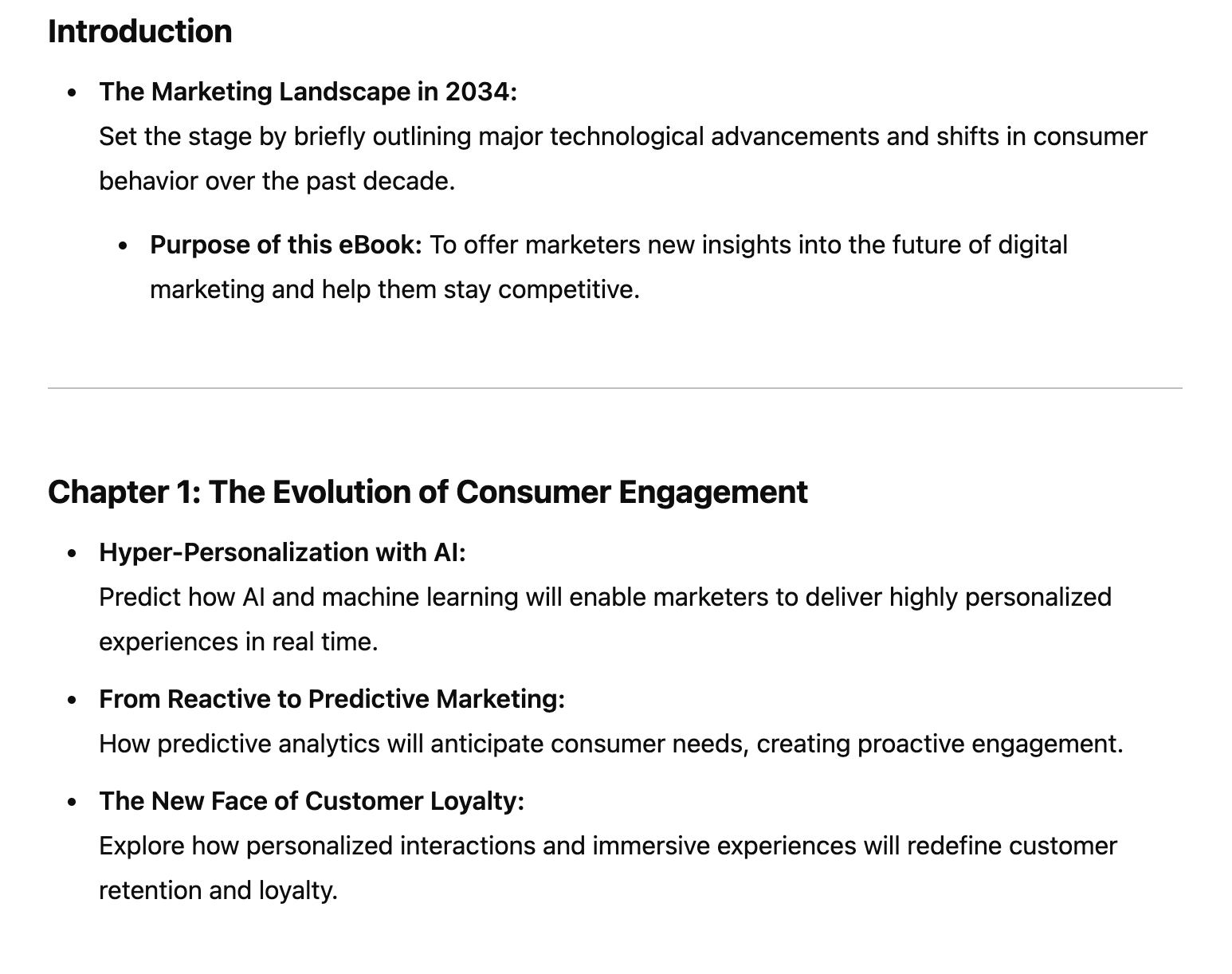Generative AI tools, such as ChatGPT and Gemini by Google, have revolutionized the way marketers, writers, students, and more develop copy and content. As Simon outlined in our last blog, these tools can be helpful in getting ideas off the ground, but you should exercise caution when submitting AI-generated content as a final product.
At Ridge Marketing, we use ChatGPT to brainstorm and theorize on concepts, both for ourselves and our clients. We’ve also spent a good amount of time editing AI-generated writing to make it site-ready. We’ve learned a lot and have some tips so you can get the most out of AI-generated content.
What is AI-generated content?
As per the AI Overview from Google, AI-generated content is digital content created by machine learning tools using human prompts. This content can include text, images, music, audio, and videos.

This overview is an example of how AI-generated content can be helpful and useful. We’ve found that AI is incredibly knowledgeable about itself, but it sometimes has difficulty giving straight answers outside of its realm.
For example, I asked Google, “What is digital marketing?” This was the response:

Notice how AI doesn’t actually define digital marketing. Sure, digital marketing is a way to connect with potential customers through online channels, but so is the entire Internet. Let’s compare that to the top organic result from Investopedia:

This is a clear definition of digital marketing. Am I sure that Investopedia didn’t use AI to generate this response? Not at all. But it’s attributed to the Investopedia team and was reviewed and fact-checked by two seemingly human people. So even if it was AI-generated at first, it went through two rounds of review by (presumably) real people.

While AI’s response to my question might have been accurate, it took humans to produce something useful.
With that, let’s examine 5 ways to humanize AI-generated content to make it more useful for yourx marketing efforts.
1) Be thoughtful about your prompts.
Give ChatGPT a good starting point. Try giving it a character to work with (e.g., “I’m a marketer trying to develop a whitepaper for a B2B client”) or providing writing examples to help it understand what you want to accomplish.
Generative AI tools struggle to write with a unique voice, but they can reliably write in authoritative or conversational tones. Try asking ChatGPT to write in an authoritative tone for an eBook or try a conversational voice for a social post.
It’s also important to choose your words carefully when writing prompts. In the example above, I asked, “What is digital marketing?” It didn’t go well. But here’s what I get when I prompted, “Define digital marketing”:

There’s more substance to this answer compared to my original prompt.
The more time and effort you put into your prompts, the better the output will be. Good prompt engineers write incredibly specific and often long-winded queries to cover for generative AI’s lack of understanding and strange behavior.
The more detailed and direct language you use in your prompts, the better the results will be.
For example, I asked ChatGPT to help me write a marketing headline for all-natural dog food. Here’s what I got back:

Not terrible, but ChatGPT made some assumptions about the product that might not be accurate. It also got a little liberal with the exclamation points.
Compare that to the results I got when I used a detailed prompt:

When I gave ChatGPT some details about my product and instructions on the tone I’d like, I actually got some decent, albeit long-winded, headlines out of it.
Spending time at the prompt-writing level will improve the outputs you get from generative AI tools. If you come into it with clear intentions, and you’re specific about your goals, you can get some good results.
2) Identify the hallmarks of AI-generated content.
After working with ChatGPT-generated content for a while, you’ll start to notice its trends and habits. Once you can identify them, you can better edit your content to give it a more human feel.
Unnecessary Long-Windedness
AI-generated content often sounds like it was written to hit a word count. For example, you tend to see excessive language like:
- Lead-in phrases (“In today’s world…,”“This generation of…,” or “When it comes to…”)
- Linking words and phrases (“Moreover…,” “Therefore…,” or “In addition…”)
- Overly complex terms or buzzwords (like “utilize” and “cornerstone”)
If you don’t check these habits, they’ll make your content sound more like a high-school paper than a professional piece.

Rambling and Generic Introductions
Generative AI will often include lengthy and generic introductions that usually don’t add any value to the content and sometimes aren’t even relevant. You’ll often find paragraphs on “ethical considerations” or “actionable steps” that can often be omitted in the editing process (more on that later).
Nonsensical Outputs
When generative AI gets confused about a topic, it produces unusable nonsense. This tends to take two forms:
- Word Salad: Sentences or paragraphs of meaningless or incomprehensible text.
- Extreme Disorganization: Paragraphs that make sense in isolation but don’t connect to each other or the piece as a whole.
3) Play to the strengths of ChatGPT.
ChatGPT is great for putting together ideas and outlines for content marketing. It’s not always so great at fleshing out concepts or giving straightforward explanations.
Use ChatGPT to brainstorm topics you want to explore and use the outlines to guide your writing. From there, take the time to conduct your own research to flesh out each point.
If you’re a marketer writing an eBook on what the industry will look like in 10 years, you might use generative AI as a starting point to get inspiration. See below:
ChatGPT put together a comprehensive outline for my eBook that I can now use as a starting point. Now I have ideas on what I can write about and a direction for what I want to research to flesh out this eBook. This type of outline can be a beneficial alternative to staring at a blank canvas, unsure where to start.
4) Put on your copyediting hat.
Humanizing AI-generated content requires parsing through the language with a fine-toothed comb. On the surface, ChatGPT’s writing sounds and looks good enough, but once you really read what has been generated, you’ll tend to notice some issues that need to be addressed.
While AI-generated content often has good sentence-to-sentence grammar, the writing tends to be incoherent on an organizational level. When editing, you’ll want to take the opportunity to restructure your content, cut out duplicate sections, and trim down fluff.
Make sure to vary the use of words, sentence structure and length. Your content will always benefit from a thorough human review. When in doubt you can use an AI content detector (Using AI to detect AI is a little counterintuitive but could help identify some of the most obvious AI language).
5) Fact-checking is key.
Beware of AI hallucinations. Per IBM, “AI hallucination is a phenomenon wherein a large language model (LLM)—often a generative AI chatbot or computer vision tool—perceives patterns or objects that are nonexistent or imperceptible to human observers, creating outputs that are nonsensical or altogether inaccurate.”
There have been notable cases of AI hallucinations in generative tools used daily by millions – like Microsoft’s chat AI, Sydney, claiming it had fallen in love with users and spied on Bing employees.
Because of hallucinations, it’s extremely important to check the facts of AI-generated content. When reviewing it, imagine you have to cite everything. Take the time to confirm every single point.
By taking the time to verify the information generated by AI, you can avoid spreading misinformation, protect your reputation, and save yourself headaches down the road.
If you use generative AI, do it right.
Generative AI tools like ChatGPT have their place in marketing and can be valuable tools for your team members. As with any new technology, it’s important to take the time to learn what you’re working with.
With each passing day, humans are able to spot AI-produced copy more easily. Spending time writing good prompts, knowing the usual style of AI content, playing to the strengths of the GPT, copy editing and fact-checking will go a long way to making the writing feel more personal and human.
Want more insights on AI? Read 8 Ways to Tell if Generative AI Can Help You Produce Content from Ridge Marketing editorial director Simon Sternklar.
Resources:
https://www.elevenwriting.com/blog/how-to-humanize-ai-content






